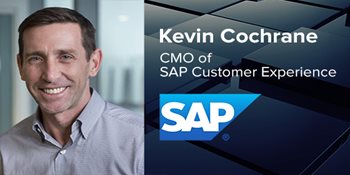Thought Leadership from Vendors in the Gartner MQ for eCommerce
By Laura Myers
October 4, 2018
commerce, commercetools, ecommerce, eCommerce Platform, Elastic Path, Episerver, gartner, Headless Commerce, Microservices, MQ, SAP
The final phase of the commerce journey could be seen as the ultimate engagement. The transaction  itself signals a win of engagement through a large percentage of the touchpoints the consumer encounters along their journey, culminating in a decision to purchase the product or service offered. The trick? A lot has to go into the strategy of that journey to consistently influence purchase from a variety of consumers and, no two brands are alike in their approach. The only thing they all steadfastly have in common is the need for a robust and reliable digital commerce platform.
itself signals a win of engagement through a large percentage of the touchpoints the consumer encounters along their journey, culminating in a decision to purchase the product or service offered. The trick? A lot has to go into the strategy of that journey to consistently influence purchase from a variety of consumers and, no two brands are alike in their approach. The only thing they all steadfastly have in common is the need for a robust and reliable digital commerce platform.
The task of choosing a platform can sometimes be filled with as much complexity as designing the commerce strategy itself but thankfully, third-party analyst reports like the Gartner Magic Quadrant for Digital Commerce assist decision makers in narrowing down which platform is right for them. Within the report, there is excellent clarification on the strengths and weaknesses of each vendor in the report and a list of features all digital commerce platforms should have to be the most timely and revolutionary in the digital commerce game.
For me, I see something else represented by every platform on that list. I see the thought leaders driving the innovation and strategy within these organizations. The Gartner Magic Quadrant represents a vast network of minds full of insight on what the commerce landscape will look like in the future and how brands can strategize their technology and approach to ensure their success. In knowing this, over the past few months of speaking with vendors featured in the report, I threw in a couple questions on the state of eCommerce to share their invaluable insights here.
The Role of Technology in the Provision of Experience
 When strategizing for the future, every brand needs to start by thinking about the experience but as more of an organism with a heartbeat of evolution driven by the customer, not just a moving finish line they can rest on until what they offer is no longer cutting it. It also doesn't matter whether it's a B2C, B2B or B2B2C model, the story doesn't change as Kevin Cochrane, CMO of SAP Customer Experience points out: “Every business model, whether B2B, B2C, or B2B2C, is complex. What matters is how each business model optimizes the experience for the customer. Customers are taking charge of the relationship they have with brands. They don’t think in terms of B2B or B2C, but ME2B, and their expectations are high.”
When strategizing for the future, every brand needs to start by thinking about the experience but as more of an organism with a heartbeat of evolution driven by the customer, not just a moving finish line they can rest on until what they offer is no longer cutting it. It also doesn't matter whether it's a B2C, B2B or B2B2C model, the story doesn't change as Kevin Cochrane, CMO of SAP Customer Experience points out: “Every business model, whether B2B, B2C, or B2B2C, is complex. What matters is how each business model optimizes the experience for the customer. Customers are taking charge of the relationship they have with brands. They don’t think in terms of B2B or B2C, but ME2B, and their expectations are high.”
In speaking with James Norwood, EVP of Strategy and CMO at Episerver, he regards experience as  the biggest need in the future of commerce and maintains that this is achieved by having a platform more in sync with a marketer’s frame of mind paired with the ability to quickly churn consumer data into actionable insight to elevate the experience: “The future of commerce will continue to be driven by the need to provide standout experiences to customers. To realize their own brilliant ideas in this regard, organizations need an extension of their team in the form of a marketer-centric platform to make customer data more unified and usable. Thankfully, delivering relevant content to commerce customers has never been easier. Consumers’ data (i.e., who they are, what their goals are, where they came from) can be collected and content can be adapted to the individual visitor (e.g., promotions, ads, products, suggestions) without manual intervention. Digital commerce success comes down to marketers and merchandisers being able to quickly change the experience a person is having with them online, which doesn’t happen when business practitioners are burdened by the time it takes to build out countless engagement scenarios or have to bypass on this need altogether because of their disjointed marketing stack.”
the biggest need in the future of commerce and maintains that this is achieved by having a platform more in sync with a marketer’s frame of mind paired with the ability to quickly churn consumer data into actionable insight to elevate the experience: “The future of commerce will continue to be driven by the need to provide standout experiences to customers. To realize their own brilliant ideas in this regard, organizations need an extension of their team in the form of a marketer-centric platform to make customer data more unified and usable. Thankfully, delivering relevant content to commerce customers has never been easier. Consumers’ data (i.e., who they are, what their goals are, where they came from) can be collected and content can be adapted to the individual visitor (e.g., promotions, ads, products, suggestions) without manual intervention. Digital commerce success comes down to marketers and merchandisers being able to quickly change the experience a person is having with them online, which doesn’t happen when business practitioners are burdened by the time it takes to build out countless engagement scenarios or have to bypass on this need altogether because of their disjointed marketing stack.”
 When it comes to eCommerce technology itself, you don’t want to just look for the one that is most ‘feature-rich’ and think it’s going to get you where you need to go regarding experience, you want to find the one that is highest in ‘feature-value’. As Harry Chemko, CEO and Co-Founder of Elastic Path emphasizes below, commerce is complex with many moving parts but the most important thing to consider is how the features within your commerce technology provide value by working quickly and efficiently together, allowing your brand to adapt to ever-changing trends and experience requirements: “For us, we’ve focused on feature development, making sure you’ve got all those leading-edge or bleeding-edge features but also, just as important or maybe more important is how do we architect it, how do we create a system that’s fast to use for new concepts in the future, a system that you can react to or be proactive with, have those proof of concepts, have the concept of an innovation lab that you can try new customer experiences out with.
When it comes to eCommerce technology itself, you don’t want to just look for the one that is most ‘feature-rich’ and think it’s going to get you where you need to go regarding experience, you want to find the one that is highest in ‘feature-value’. As Harry Chemko, CEO and Co-Founder of Elastic Path emphasizes below, commerce is complex with many moving parts but the most important thing to consider is how the features within your commerce technology provide value by working quickly and efficiently together, allowing your brand to adapt to ever-changing trends and experience requirements: “For us, we’ve focused on feature development, making sure you’ve got all those leading-edge or bleeding-edge features but also, just as important or maybe more important is how do we architect it, how do we create a system that’s fast to use for new concepts in the future, a system that you can react to or be proactive with, have those proof of concepts, have the concept of an innovation lab that you can try new customer experiences out with.
There’s a lot to commerce, by its nature is really complicated, you’re integrating with a lot of backend systems and that becomes heavy if you don’t do it well, once you also have a lot of different touchpoints out there, you don’t want to do something that causes you to have to go and change all of them. Our approach was to create this architecture that had separation between the front-end development and backend development. That was kind of the driver behind how we think people will be able to do all the things they need to do today but also put systems in place so they can react and be really agile in the future with creating that separation. Also, you’re going to have different teams, you’re going to have teams that want to do these front end experiences really well and you don’t want to create an architecture where if they want to try something like that they’re going to have to launch a whole project that includes IT, maybe a design firm, and maybe the business side, you want to give some autonomy to those groups to do that.”
Macro Changes and Microservices
The agility many of the top-ranking commerce platforms offer is vital in their success and the  success of their users but what is it that brands need to adapt to now and in the coming years? Given that commercetools “believes this year’s Magic Quadrant report is especially critical in helping organizations navigate the dramatic changes taking place in commerce and the enterprise architectures supporting it”, I asked Kelly Goetsch, Chief Product Officer at commercetools to share his thoughts on what these significant changes will be that are taking place in commerce.
success of their users but what is it that brands need to adapt to now and in the coming years? Given that commercetools “believes this year’s Magic Quadrant report is especially critical in helping organizations navigate the dramatic changes taking place in commerce and the enterprise architectures supporting it”, I asked Kelly Goetsch, Chief Product Officer at commercetools to share his thoughts on what these significant changes will be that are taking place in commerce.
- Headless Commerce: We see almost everyone going headless these days, meaning the user interface (web, mobile, kiosk, etc) is built/deployed/managed separately from the underlying commerce platform. The two have completely different release cycles, with the commerce platform exposing APIs and the front-end (whether custom or a packaged Digital Experience Platform) consuming those APIs and building compelling and consistent channel and device-specific experiences.
- Increase in Traffic from New & Emerging Channels: We’re seeing more and more traffic originating from somewhere other than a browser on a desktop. In 2016, more than 50% of web traffic came from non-desktop browser clients. Every day we’re seeing more and more traffic originating from native mobile applications, progressive web applications, tablets, smart devices, in-store screens and even voice-enabled devices. There's a very long tail of these types of clients. Interaction points are everywhere, with new clients popping up every day.
- Standardization of APIs and Microservices: In just the past six months, we’ve seen APIs fronted by microservices become the standard in commerce platform architecture. APIs are necessary to create seamless interaction with all of the new non-traditional clients, and microservices are necessary due to the rapid pace of innovation they enable. With a microservices approach, you can release multiple times a day to production vs. the multi-week or multi-month release cycles that are common with more traditional monolithic applications.
- GraphQL Migration: We see many organizations just starting to evaluate GraphQL as a complement to REST APIs. Rather than querying multiple APIs to render a page, you can now make one single query using GraphQL, which will get you back a single response that includes data from multiple REST APIs. It’s a game-changer.
A recurring theme in the commerce conversation is that APIs will continue to play an increasingly important role in the future of commerce but in the report, I frequently saw the term microservices served up alongside mention of APIs and knowing commercetools’ collective opinion on the vital role of microservices for commerce, I asked Kelly to dive a bit deeper into what that meant: “Traditional development is too slow. Many retailers and brands are using 1990s era monolithic commerce platforms that make it hard to release to production more than once every few weeks or months. And, it’s still common to deploy a legacy monolithic commerce platform to production once a quarter. Amazon, on the other hand, releases 50 million times a year to production. Innovation through iteration is their core competency. They have relentlessly embraced microservices, and they use it to continually push new functionality to production, incorporating real user feedback to continually improve their offering. It's not uncommon for Amazon to iterate on a feature a few times over the course of a single day until it's producing the business value they want. Traditional retailers and brands can now adopt microservices to have the same release frequency as Amazon. The methodology and technology have finally made microservices usable by anyone, not just Amazon and the other tech giants.”
Kevin Cochrane of SAP also highlights another macro change brands need to take advantage of when curating their commerce strategy: “With the ability to fully integrate both supply and demand data, we will see brands more strategically implementing a 360-degree view of the customer. By connecting data across the entire enterprise, customer experience professionals will have a comprehensive view and be able to better understand intent, anticipate needs and provide the helpful touchpoints that consumers have come to expect.”
What Should Happen Next?
One attribute of the Gartner Magic Quadrant reports is the evaluation of vendors on their potential to transform their respective markets. With this in mind, I asked the same question of two of the four gentlemen I spoke with: “If you could transform anything about the commerce experience, what would it be?”
For Harry Chemko, it’s the tired process and entirely missed opportunity surrounding point of sale: “That experience around point of sale, right now I think it’s just really outdated and I think there is a lot of value creation that can be made for retailers or anybody that’s working with some sort of an organization that has that point of sale. Starbucks showed a huge disruption around point of sale and they got huge results out of that and saw the same store sales would go up once they had that mobile ordering. There’s something like that for pretty much every industry or every vertical, every kind of really niche vertical even, everybody has got some magic they can create there by just changing that point of sale experience, really turning it on its head. And that’s just a big part of your experience with a brand, you want it to be frictionless, you want it to be embedded under the surface, you want it to be there but not in your face, you want to give people the right amount of information at the right time, don’t overload them, and don’t hit them with ads. There are things there that almost every industry or vertical can do that is something disruptive or transformative like mobile ordering from Starbucks.”
For James Norwood, it’s the way content and personal data are currently used: “Contextual commerce is and will continue to be the gold standard when it comes to the digital customer experience in the retail space and beyond. Overall, I’d love to see content made explicitly relevant to each customer, so retailers can deliver real value based on actual intent. When discussing using an individual’s data to make an experience more engaging and relevant, however, the conversation must turn to privacy and security. What General Data Protection Regulation should be doing is opening up marketers’ eyes to the fact that consumers are in control of how their information is used, and they will punish organizations that are reckless with their data in the form of using it without improving their experience or not making it secure.”
Ending Notes
As complex as commerce is, Kevin Cochrane boils it down well in saying any decision maker in the market for a new platform should remember “At the end of the day, the customer has the final say. With this in mind, technology buyers should look for a vendor who has the customer at the heart of all of their decisions and efforts. When the customer is not the priority, companies will lose direction.”
For me, the information within the report that Gartner shares from the market highlight a point of value in the relationship vendors have with Gartner and other third-party analyst firms: their proximity to customers and the insight they can provide from decision-makers. In my opinion, this information is gold to both technology vendors and users as it can be understood and reinvested into both the product and execution strategy.
One point made in a previous article my colleague Venus and I did on How to Choose the Best WCM System for Your Business can be applied to any decision-making process when it comes to choosing digital technology, look past the platform and evaluate the organization through reports like the Magic Quadrant and the content shared throughout the industry. Look at thought leadership, look at insight, even look at what you need your platform to do and weigh that against a particular organization's expertise on the topic.

Laura Myers
A digital business, marketing and social media enthusiast, Laura thrives on asking unique, insightful questions to ignite conversation. At an event or remotely, she enjoys any opportunity to connect with like-minded people in the industry.